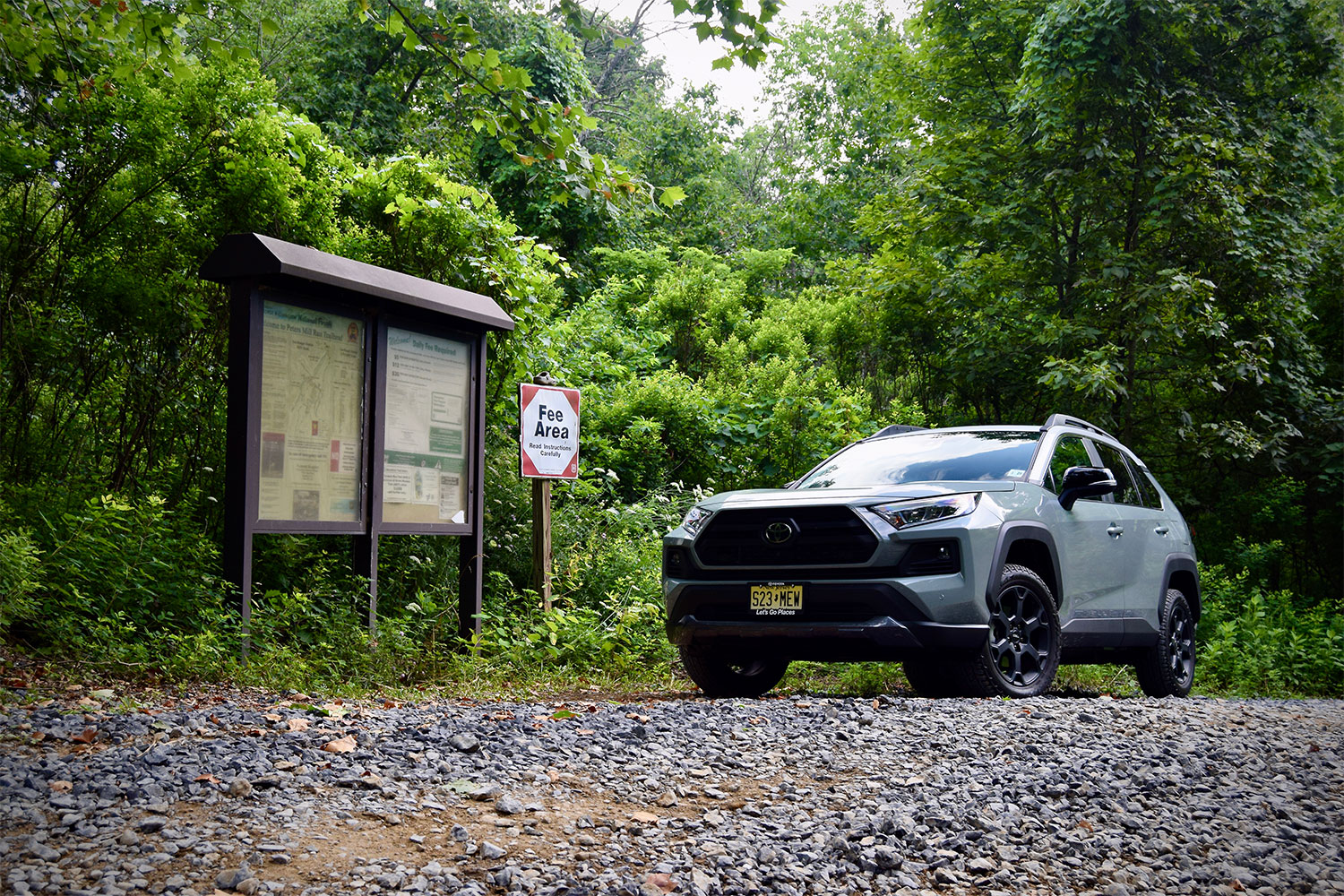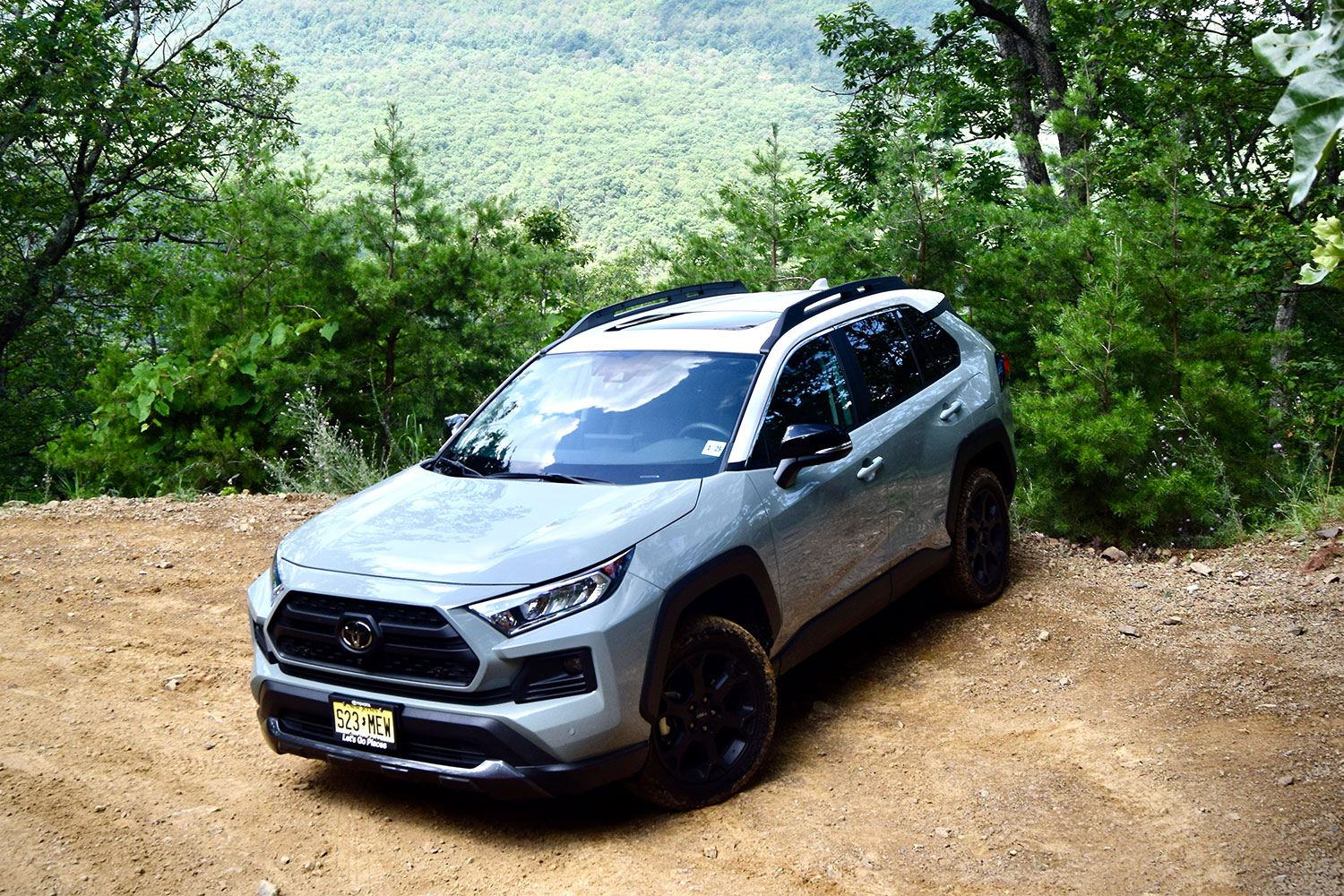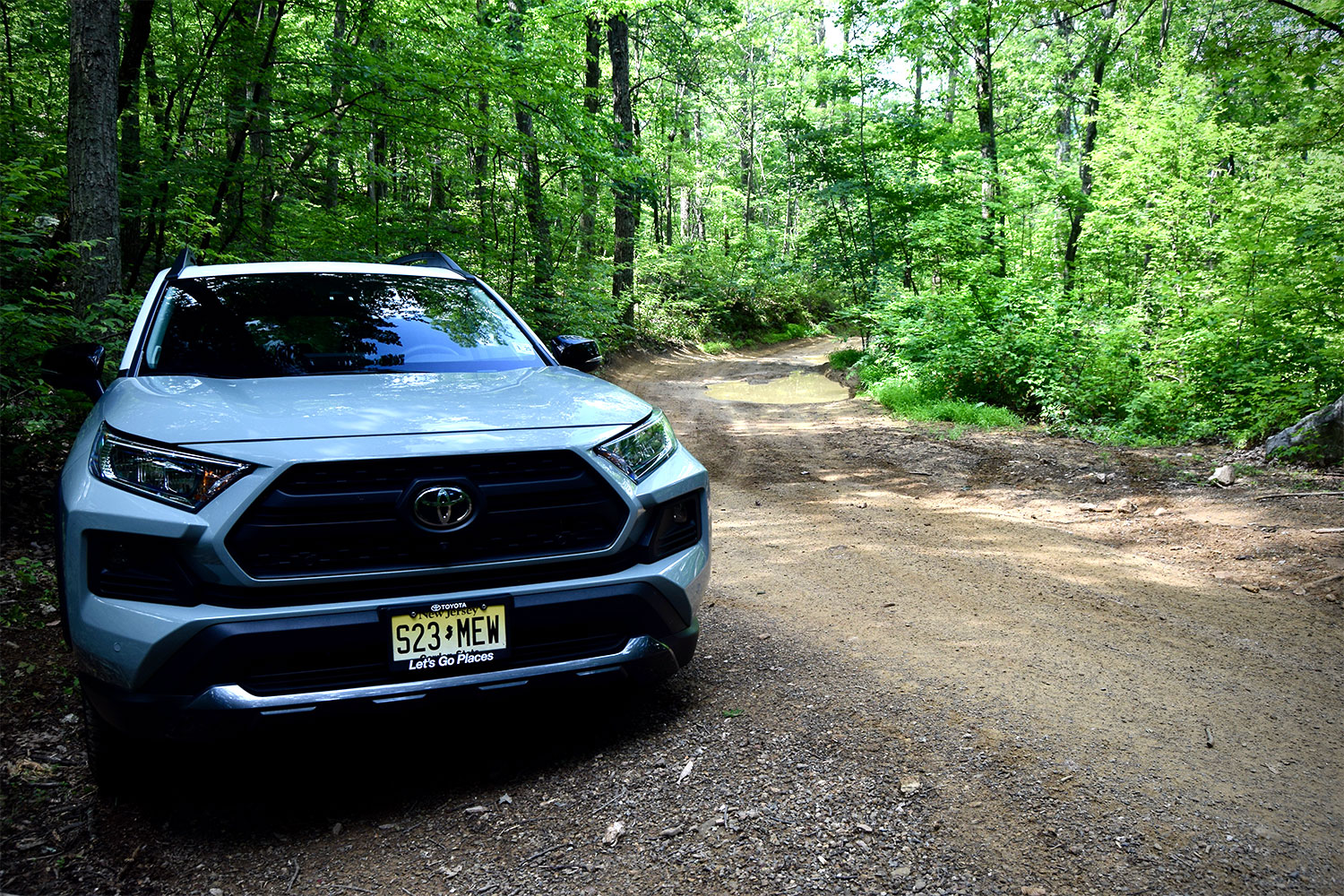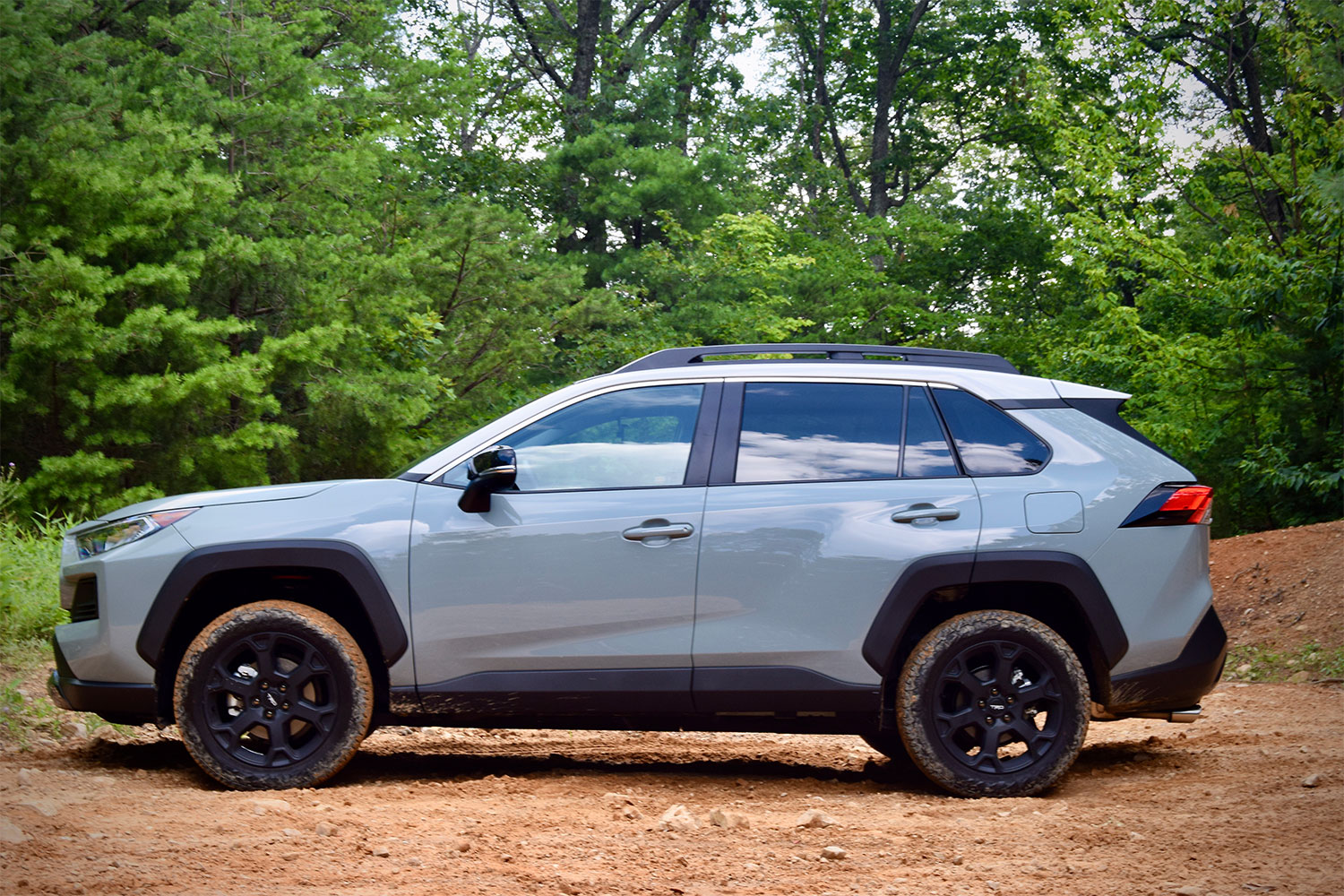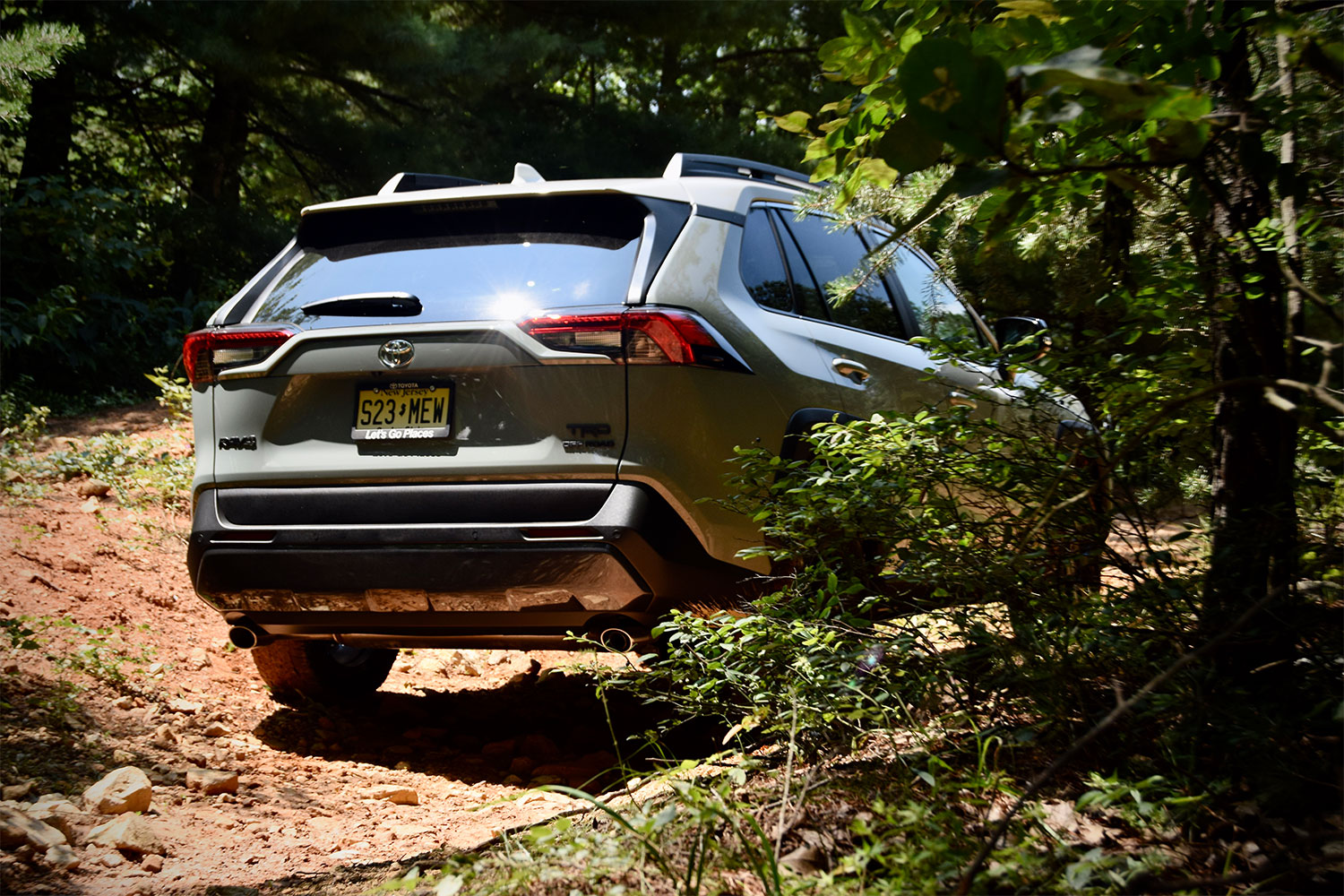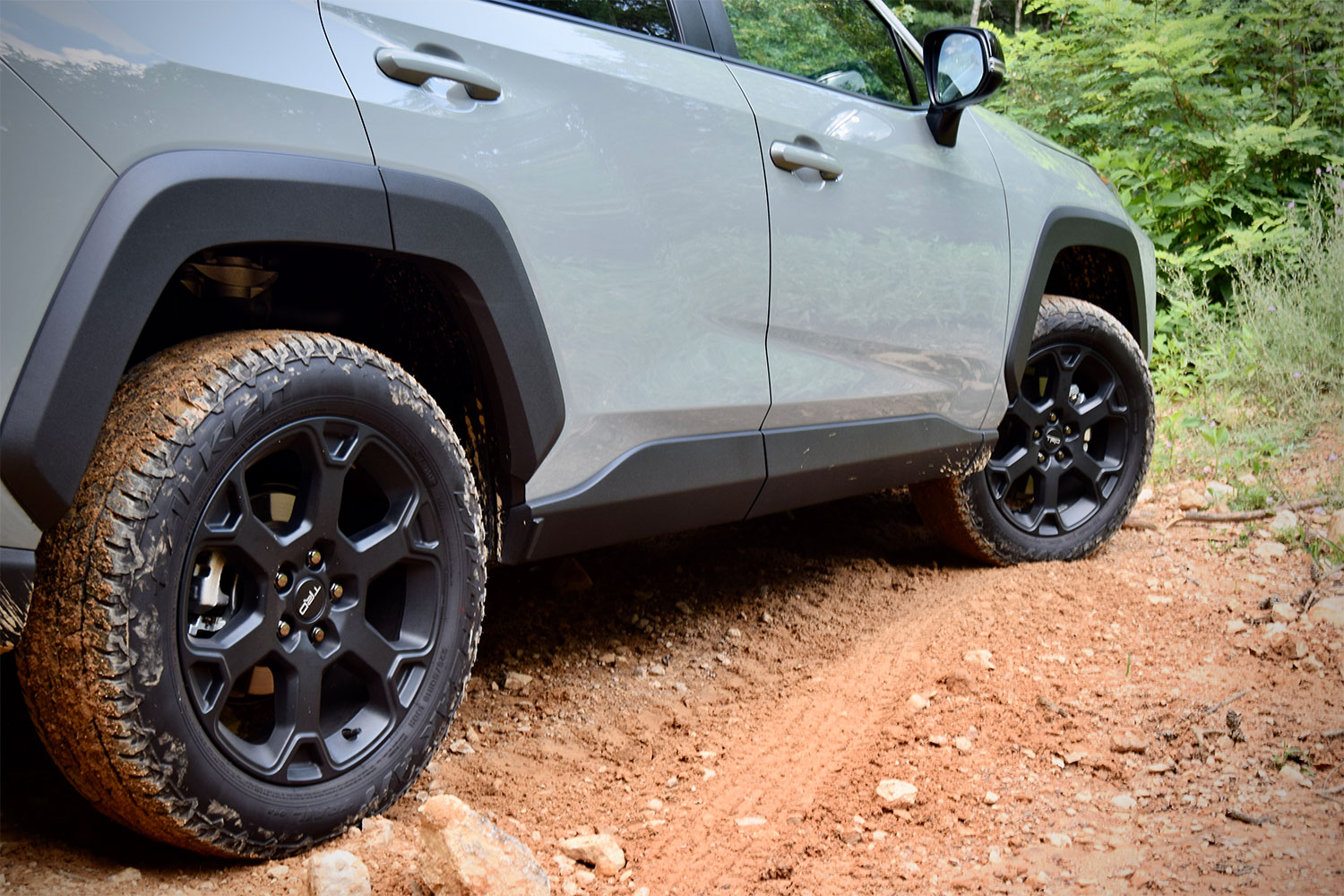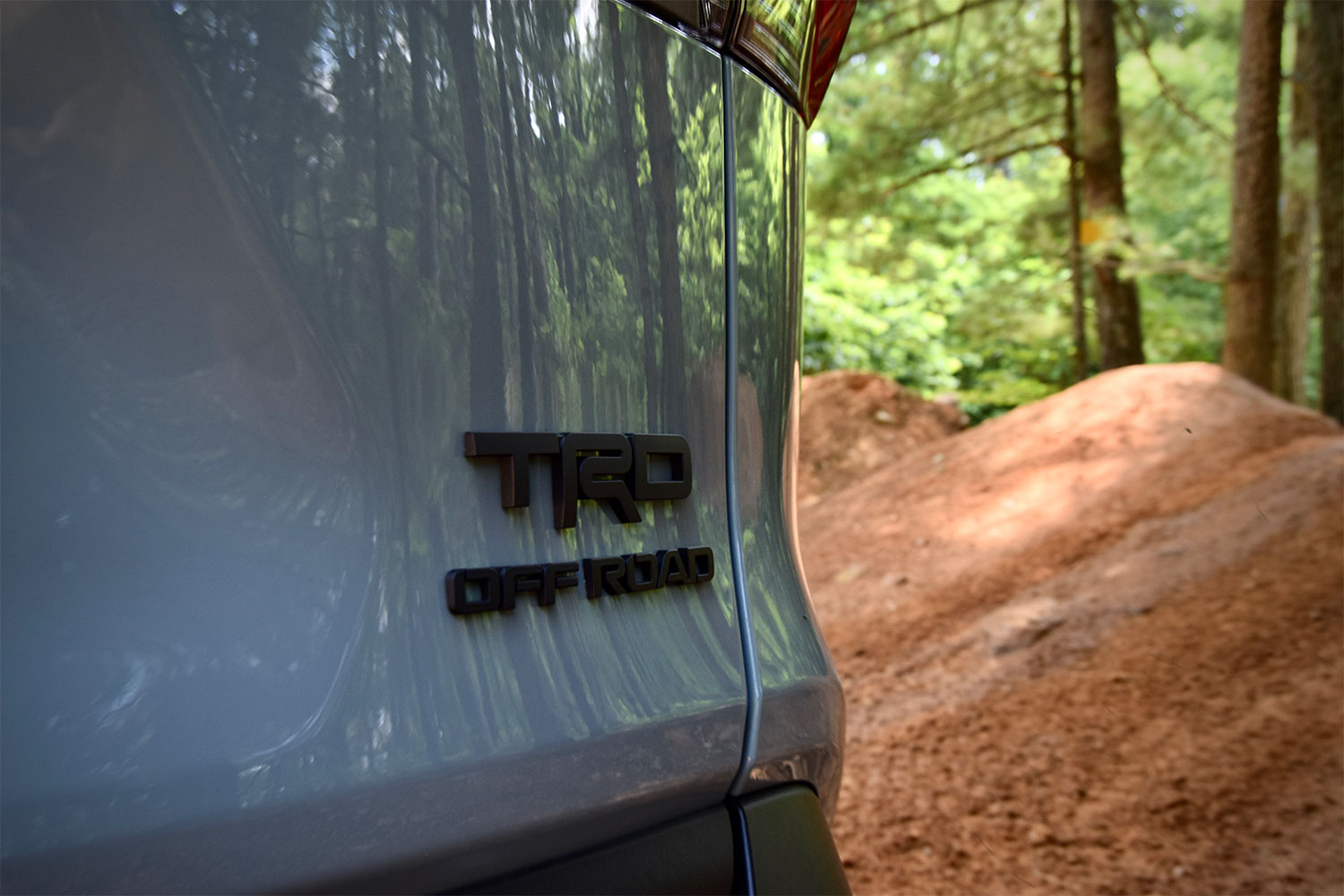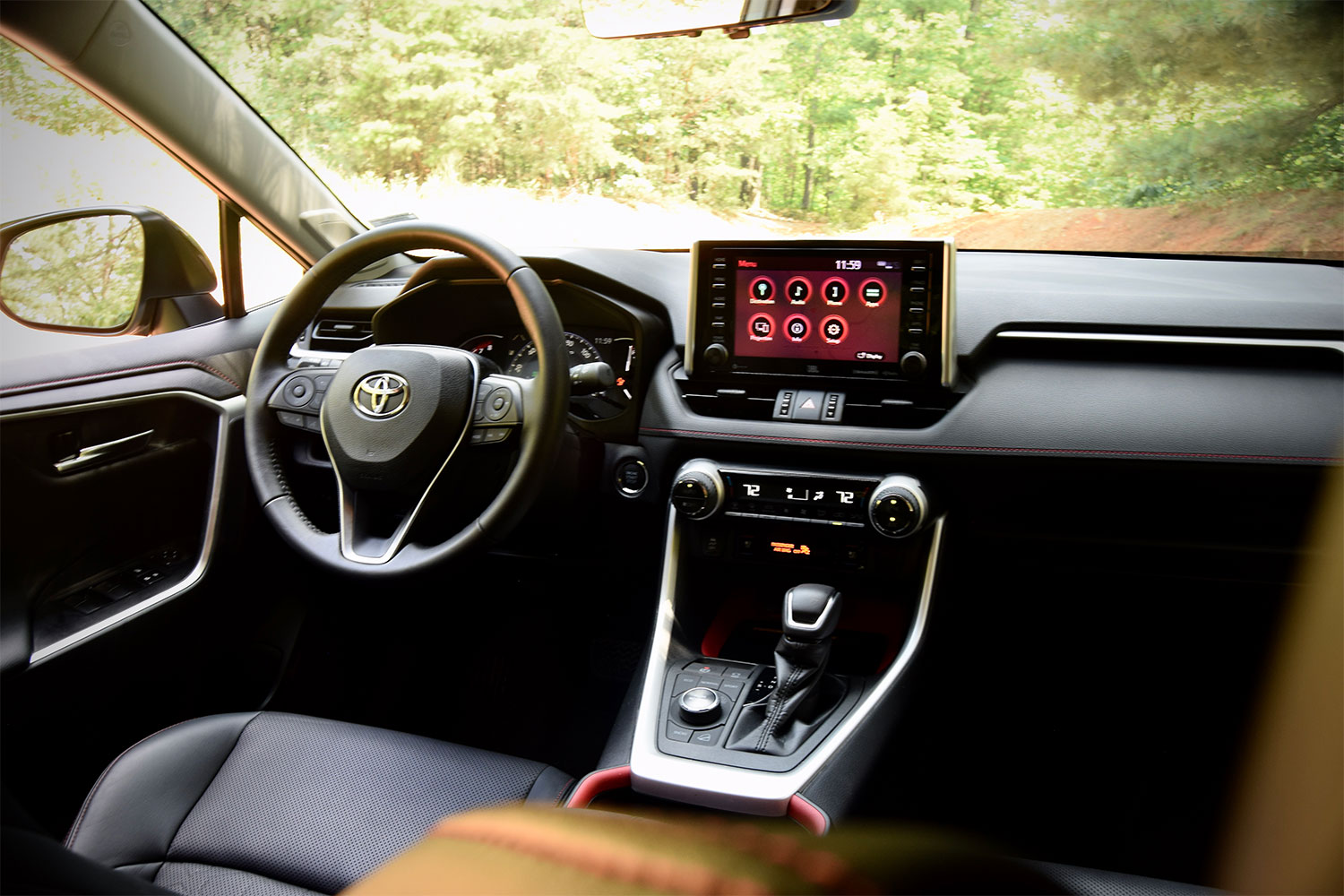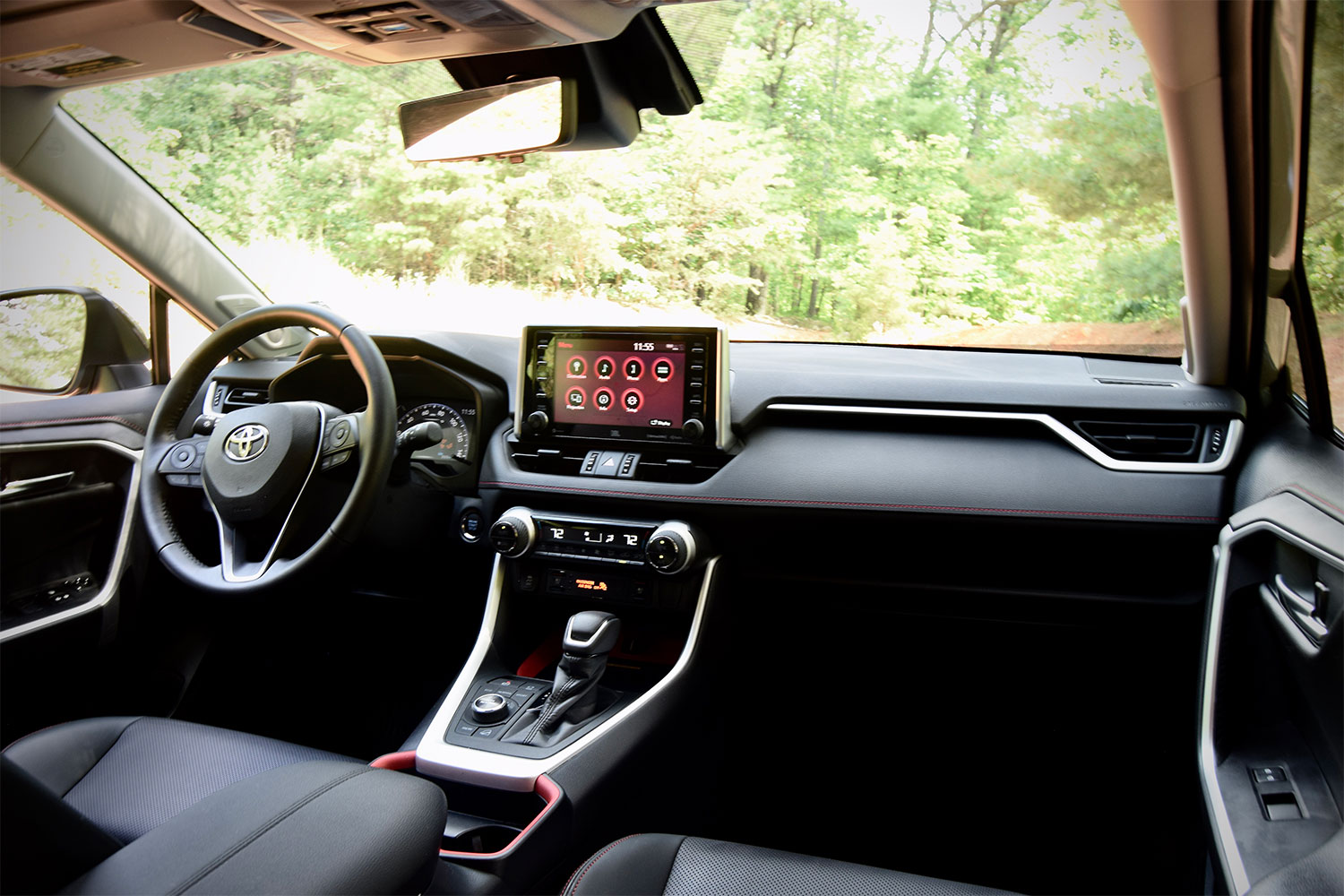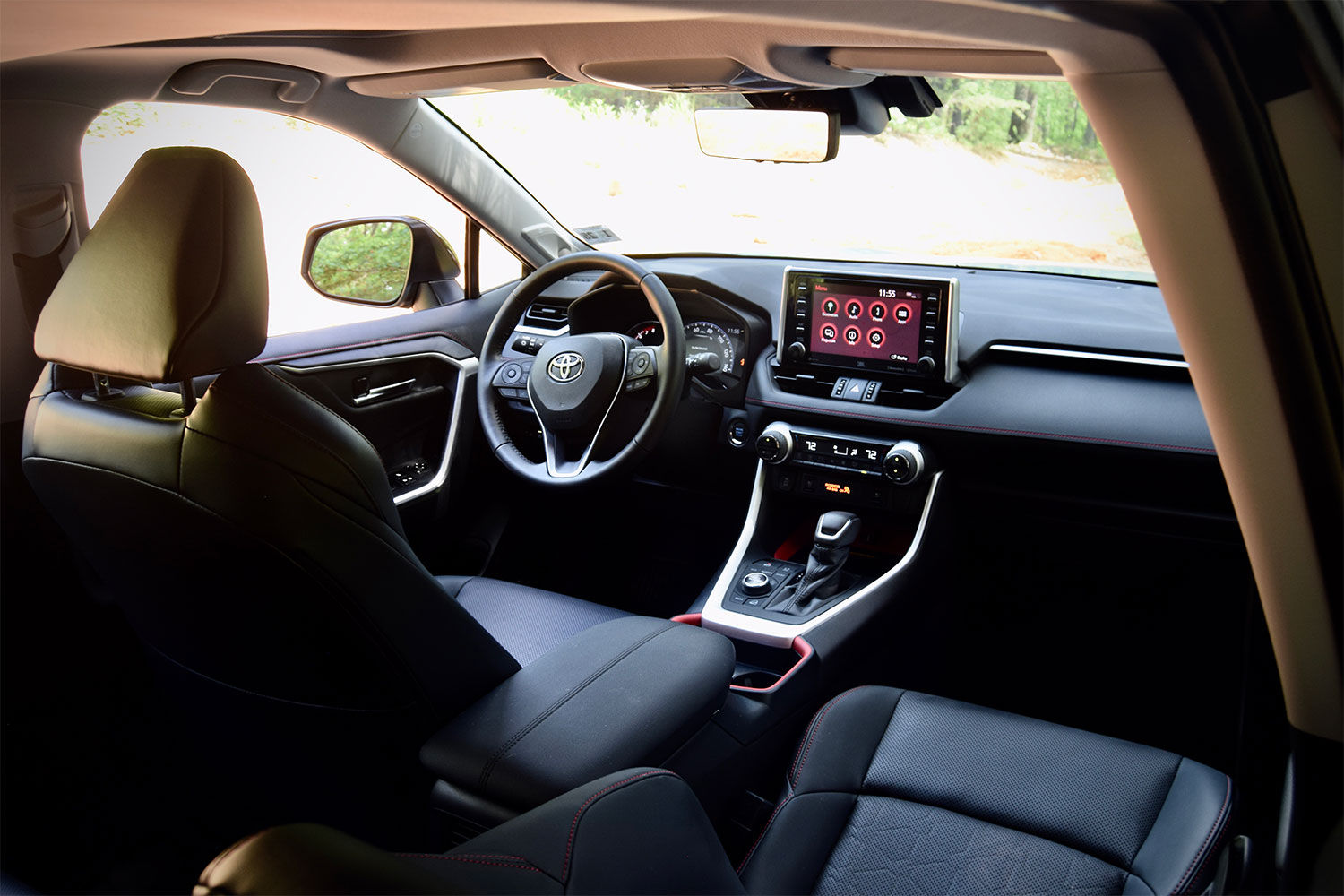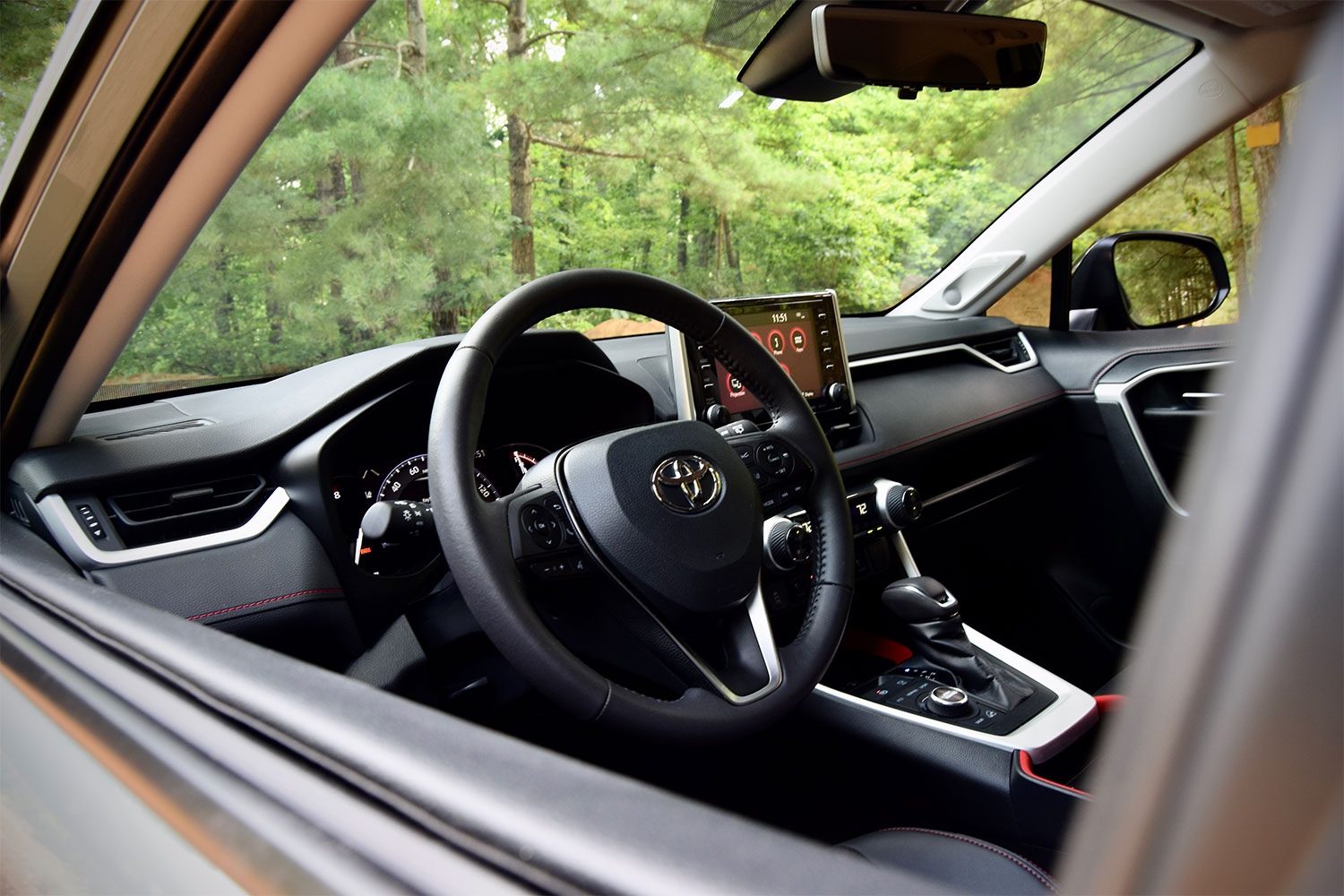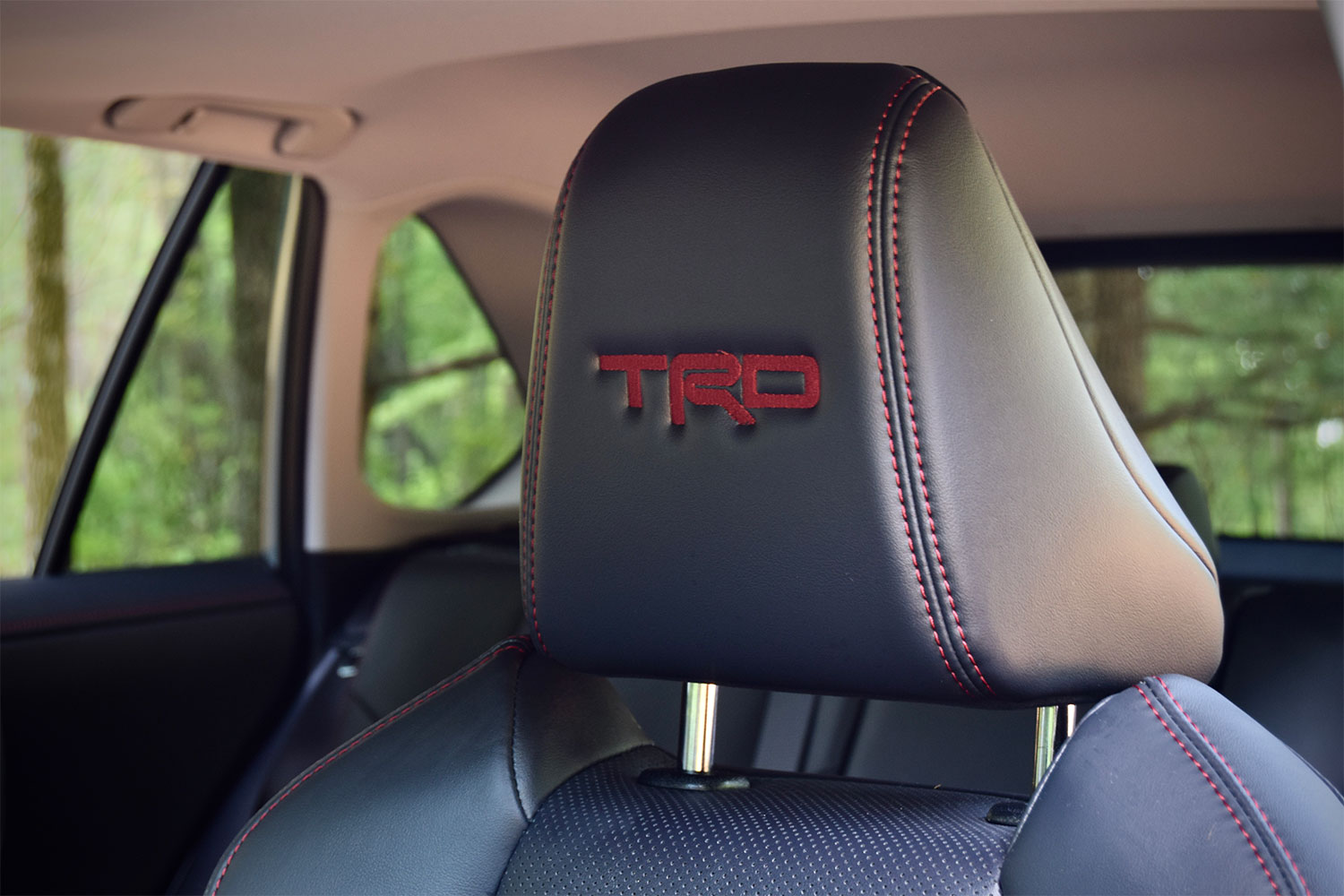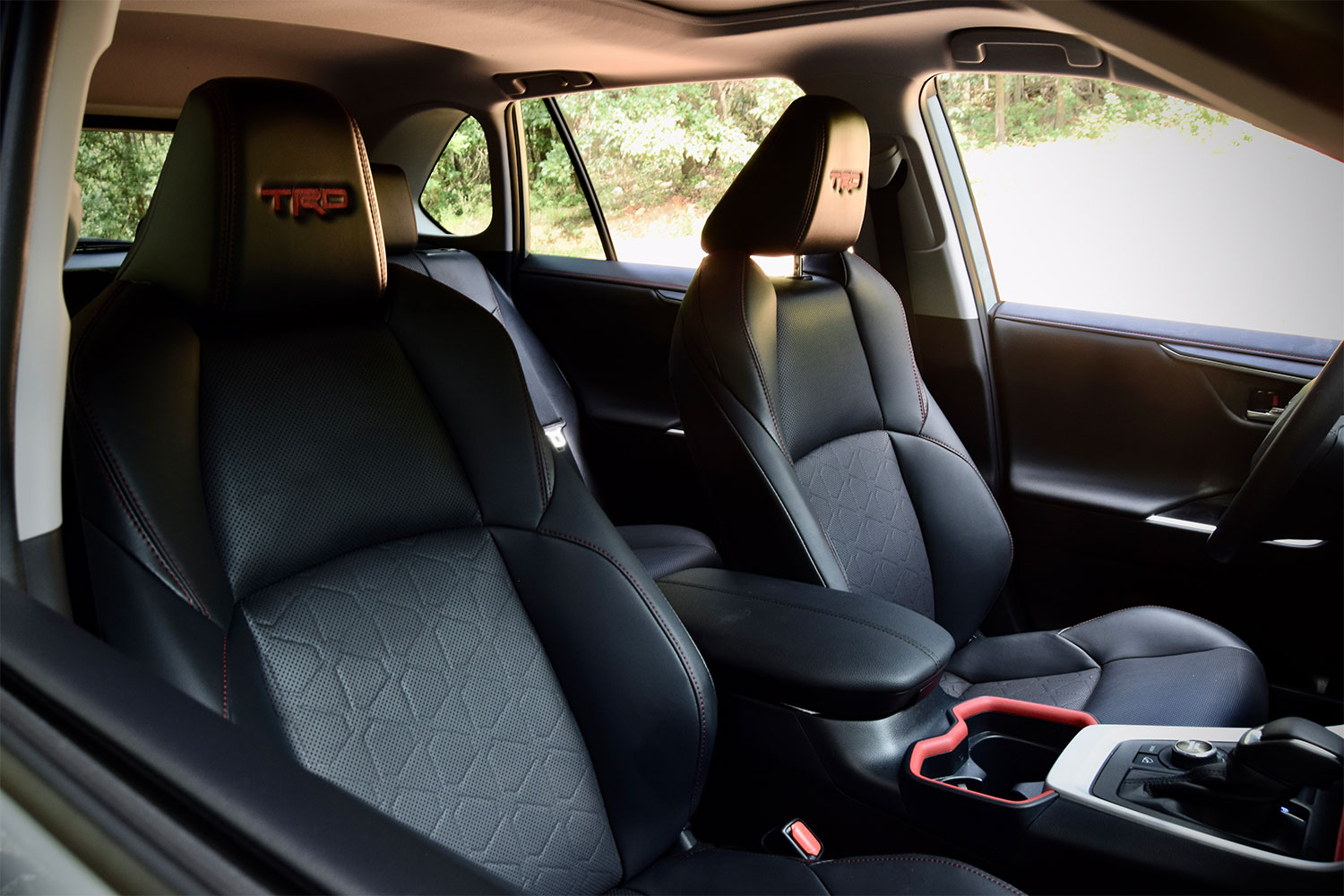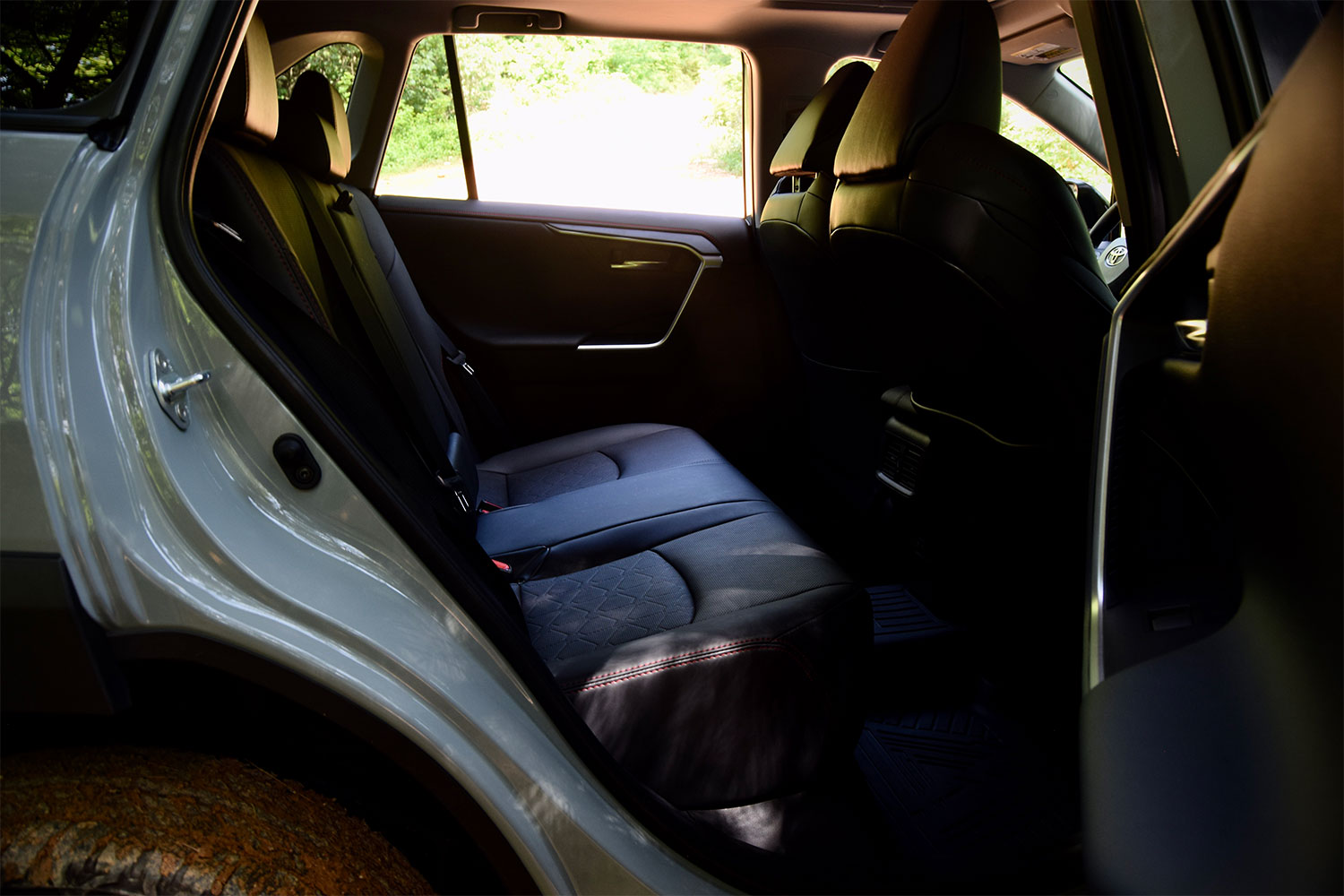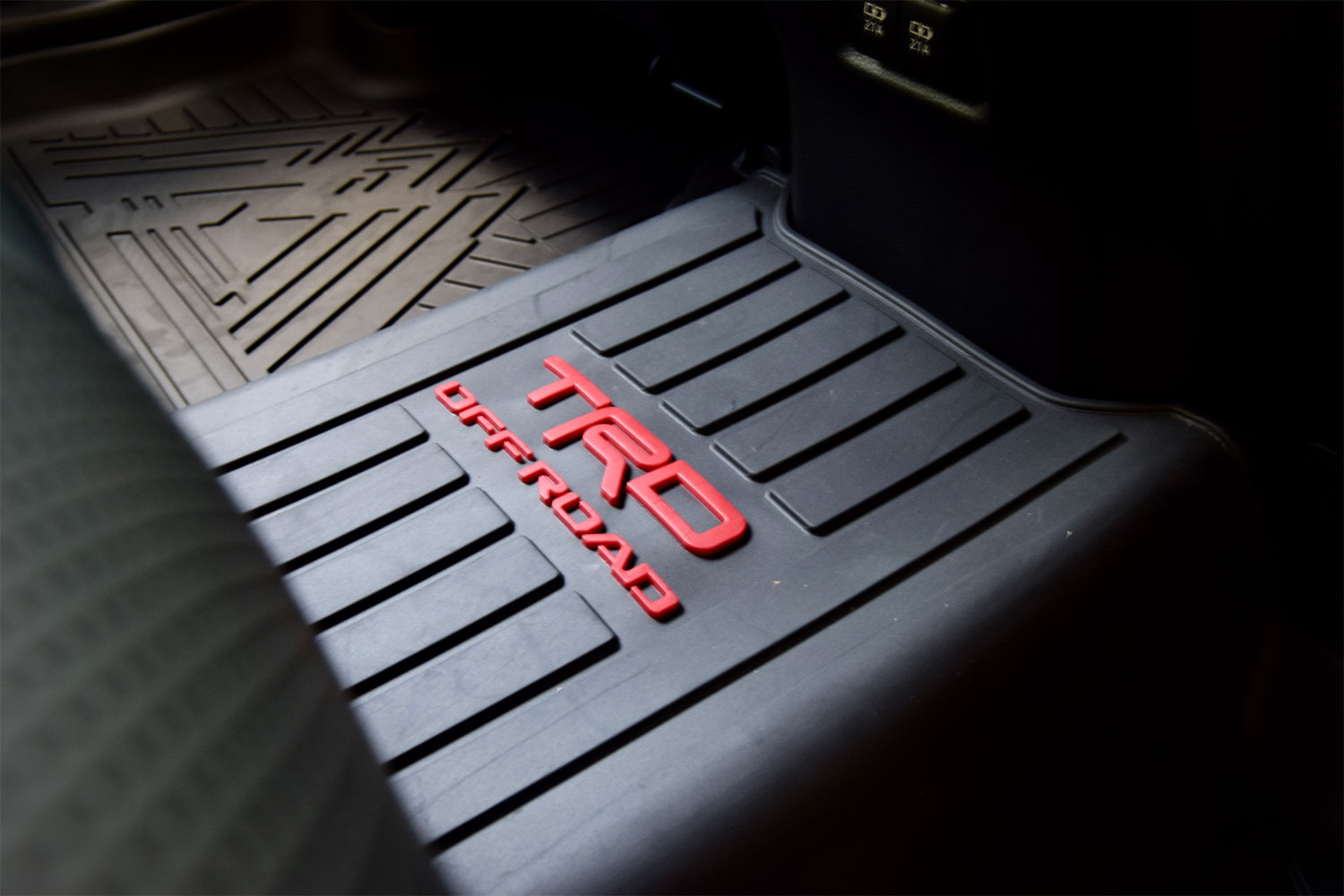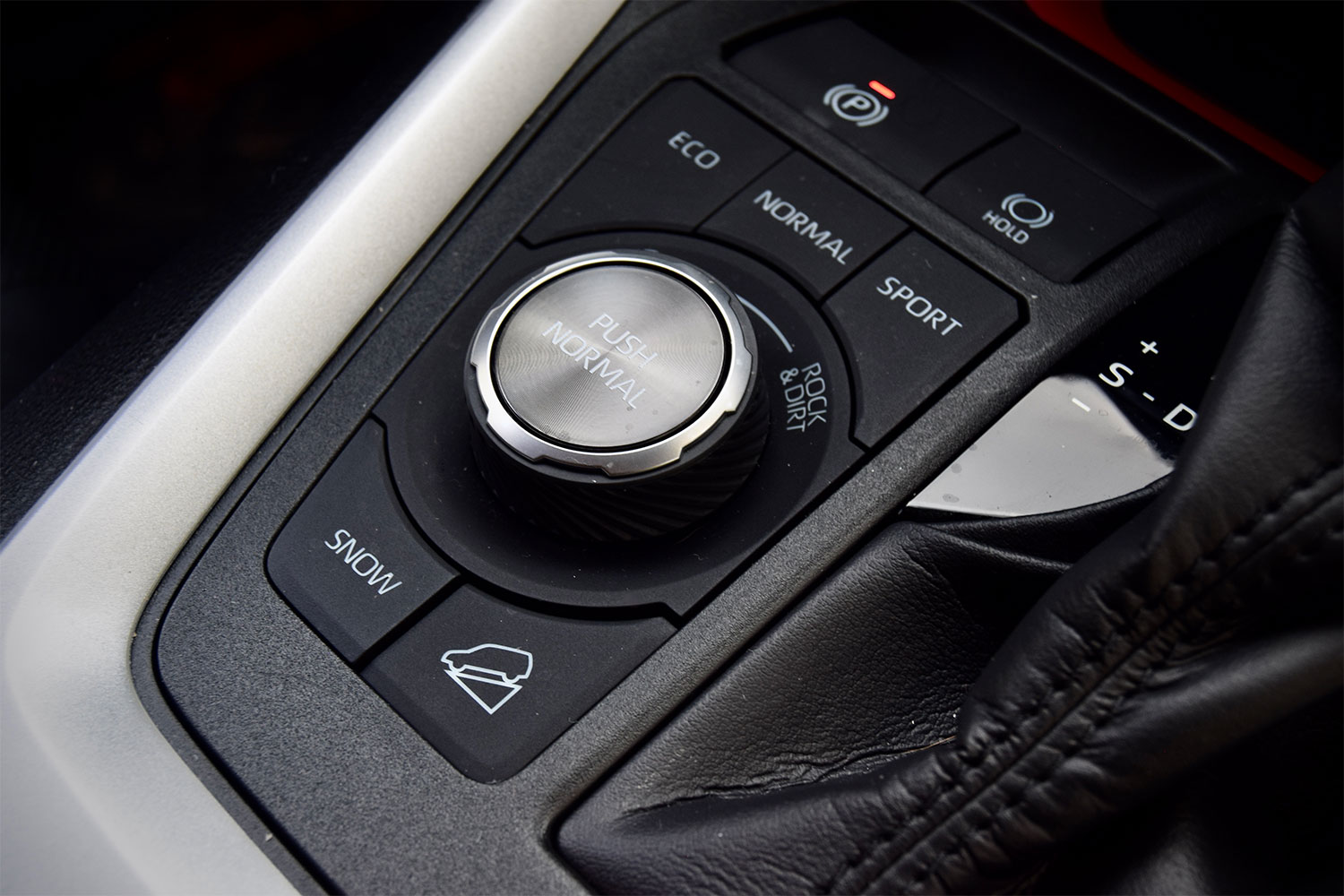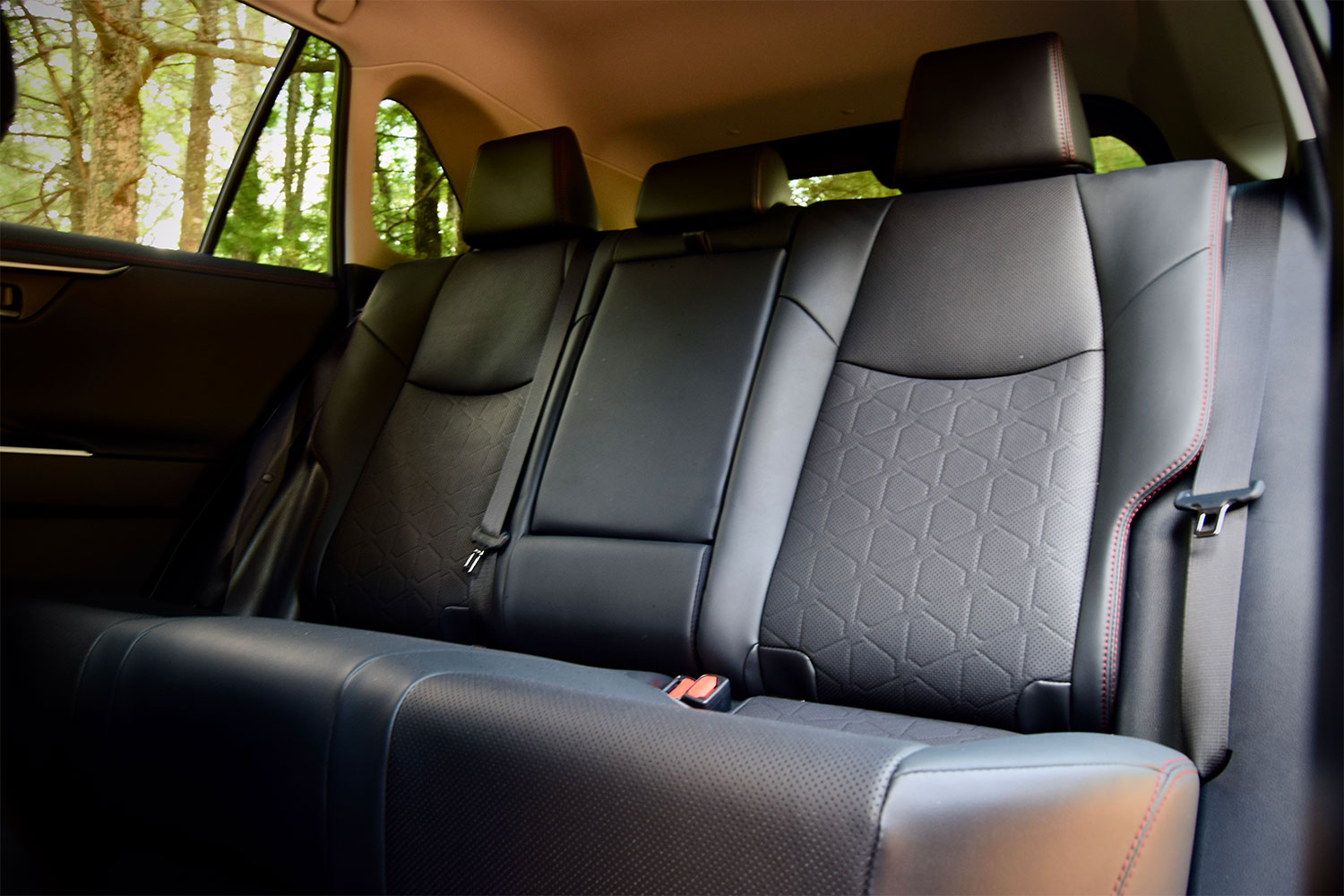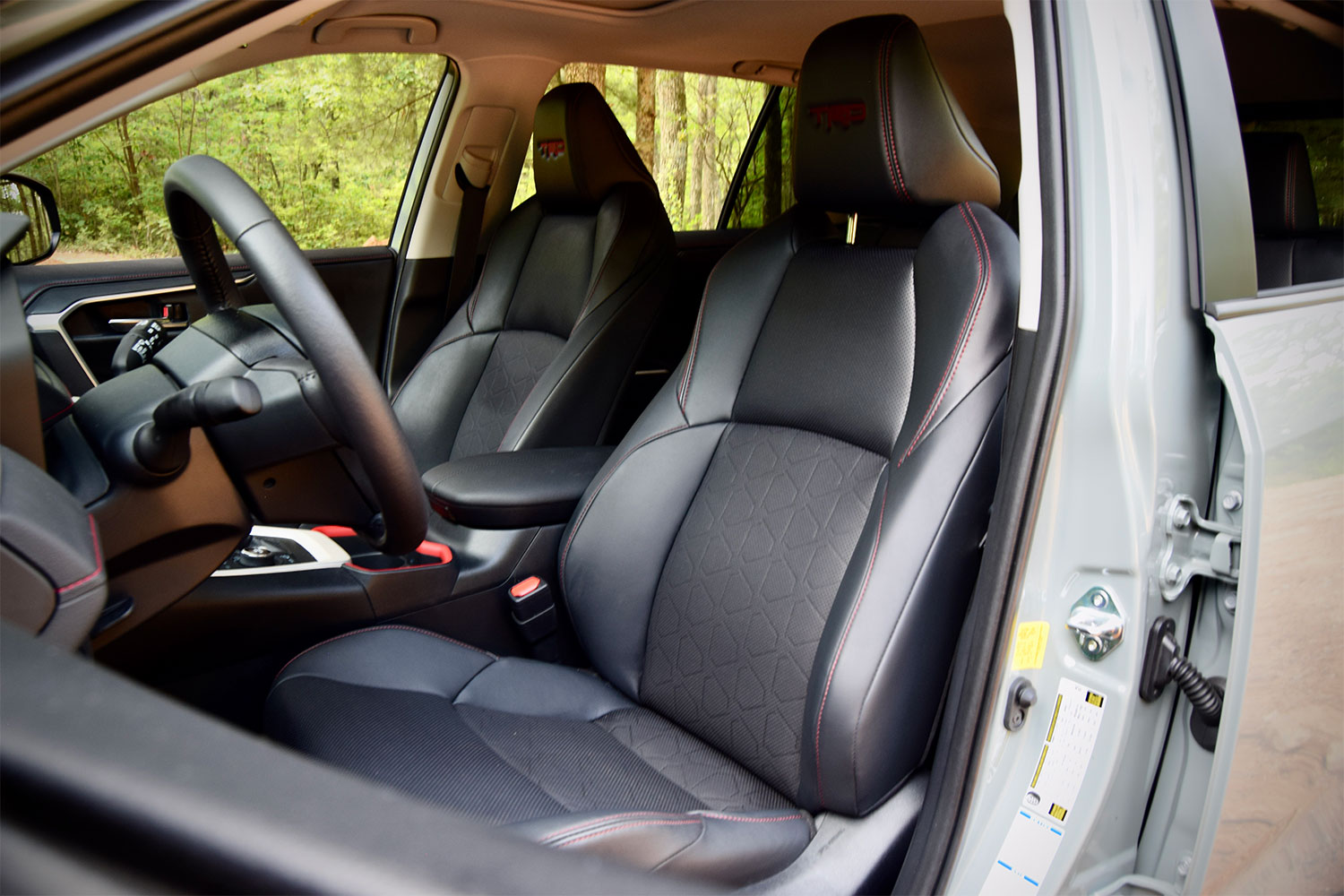Drivers that are interested in off-roading are usually pushed toward a few SUVs: the Jeep Wrangler, the Toyota 4Runner, a used Toyota Land Cruiser, and one of Lexus’ antique behemoths. They’re tried and true options, having served thousands of off-roaders faithfully for decades. Here’s the thing, the majority of people that own these SUVs rarely scratch the surface of just how capable the machines are. Unless you’re into hardcore off-roading or rock crawling, these things are overkill. If you’re interested in occasionally hitting a trail and aren’t absorbed in things like departure and breakover angles, there’s the Toyota RAV4 TRD Off Road.
It’s easy to take one look at the RAV4 TRD Off Road and think Toyota phoned it in. The TRD Off Road is the most expensive trim in the RAV4 family, and at first glance, it doesn’t really look like it’s worth $2,225 more than the similarly styled Adventure trim. But the most capable off-roader in the SUV lineup is worth a longer look.
Under the rugged skin, you’ll find upgraded shocks and red coil springs that have been tuned by Toyota Racing Development (TRD). The SUV also comes with improved bump stops, which supposedly have been added to improve body control when the suspension reaches its limit. Knobby Falken Wildpeak A/T Trail tires that are wrapped around 18-inch matte black wheels have also been added to the mix. Make all the assumptions you want about the SUV’s off-roading abilities, but the darn thing certainly looks the part. Especially the tire and wheel combination.
Having the look of an off-roader doesn’t mean much if you can’t back it up. We set out to find a trail to test the RAV4 TRD Off Road in the real world, and luckily, the SUV has the goods to back it up.
Through word of mouth and AllTrails, I found Peter’s Mill Run in George Washington National Forest. It’s a 6.5-mile trail that AllTrails rates as “easy.” It seemed like the best place to see just how capable the RAV4 TRD Off Road is.
The trail starts off easy enough, appearing to be a gravel path in the middle of the forest. The driver-assist features have been turned off, to maintain my sanity from all those beeps and bongs, and the Dynamic Torque Vectoring AWD System is now in its “Rock & Dirt” setting. Hill descent control is also engaged. Tire pressures remain the same as they were when I set off. With the right buttons depressed, we set off further down the path.
The trail goes from predominantly dirt with a few errant jagged rocks to nothing but jagged rocks within 10 minutes. The RAV4 doesn’t struggle for traction, but its first weakness becomes apparent – this SUV doesn’t have any real skid plates. Instead, what the SUV comes with are flimsy protective coverings. It’s a large difference that brings the pace down to a crawl.
Normally, off-roading is slow going, requiring drivers to choose the path of least resistance to maintain speed and ensure things don’t get too bumpy. That’s the same case here, but it’s even more so when you know all that’s protecting the undercarriage is a bit of fragile plastic. Pair the lack of sturdy skid plates with just 8.6 inches of ground clearance, which is the same amount you get from the Adventure trim, and you have to think twice about the routes you take.
The physical size of the trail doesn’t help quell my anxiety, either. Some parts are large enough for two SUVs to fit, others are barely wide enough for the RAV4 to fit through. Moving to the tiny bit of runoff the trail offers in odd places to let others by is a pain, never knowing whether the RAV4 will get beached in the process.
It’s slow going. The rocks see us average around 2 mph, barely hitting 3 mph on a short stretch of mercifully smooth dirt every now and then. Nevertheless, off-roading, when you’re not clamping down on the steering wheel and praying that a boulder doesn’t smash a hole in the oil pan, can be freeing. On the long stretches where the terrain evens out, you can take a quick break. Soaking in the dense forest, the birdsong, the slow hum of the RAV4’s engine — it’s an experience.
Every so often, I have to get out of the car to move a massive boulder off of the trail. The handy 360-degree camera has a view that shows the front of the vehicle, but it’s not exactly in high definition, so it’s difficult to see precisely how big a rock is or where it’s placed on the road. Better to play it safe.
Through the rough, rocky terrain, the RAV4 chugs along. We haven’t gotten stuck yet and the hill descent control system works just as intended, helping the SUV crawl downhill without having to constantly apply the brakes. The SUV’s even garnered some attention. Nearly every other SUV on the trail is a Wrangler or a 4Runner. You get the odd Land Cruiser here and an old Land Rover Defender there, but for the most part, Jeeps and Toyotas rule the trail. People stop, take pictures, give me a thumbs up. They’re surprised to see a RAV4 crawl through harsh stuff. One guy yells, “That’s so cool,” over the roar of his heavily-modified Chevrolet Silverado.
The SUV manages to hit a sweet spot that true off-roaders have struggled with.
On the steep, rocky terrain, the RAV4’s suspension feels like it’s been caught off guard. There’s not enough articulation to keep the SUV on an even keel, the suspension bottoms out way too quickly, there’s not enough ground clearance, and the traction control system is hypersensitive. Despite all of these issues, the RAV4 made it. It didn’t get stuck once, even with a novice behind the wheel, and to the surprise of everyone that saw it. The trail may have been rated at “easy,” but it certainly wasn’t as simple as I was led to believe.
Toward the halfway mark, the trail changes. The forest becomes denser, days of rain have left large puddles and globs of mud, while the rocks give way to dirt. I switch the all-wheel-drive system to its “Mud & Sand” mode. There isn’t a discernible difference in the way the SUV feels or handles, but the RAV4 continues to chug along. So, the computers must have adjusted something.
At the end of the long, three-hour journey, I was amazed that the RAV4 had completed the trip without fault. I was comfortable, with the air conditioning on high, the ventilated seat on, and, when there was service, SiriusXM bumping away on the JBL audio system. The journey back home was also comfortable and throughout the entire seven-hour day, the RAV4 averaged 30 mpg.
People look at the Instagram and Twitter posts with SUVs and trucks tackling rough terrain and overlanding, and think they want in. The allure of off-roading is strong, marketing’s to blame for that. Eventually, though, when these people hit the trail, they soon realize that off-roading isn’t all that comfortable. It takes patience, loads of time, a strong stomach (the way SUVs jostle is unsettling), and compromises when it comes to on-road comfort. Loud, uncomfortable, inefficient, and unsettling to drive on-road, true off-roaders are only enjoyable when they’re in their element, off the beaten path.
The only issue with the RAV4 TRD Off Road is its price. Our tester cost $41,780, which includes a few pricey packages. Even for a vehicle that has it all and can seemingly do it all, that’s a lot. If you’re really looking to go all-in on the #off-roading lifestyle, the 4Runer TRD Off Road costs $40,960. It’s a much more capable machine, though it isn’t nearly as comfortable, efficient, or as well equipped.
The majority of people, aren’t really interested in a Wrangler or a 4Runner. Instead, something like the RAV4 TRD Off Road will do just fine. Comfortable 90% of the time on-road and massively impressive off-road, the SUV manages to hit a sweet spot that true off-roaders have struggled with. All you really need is a decent set of skid plates – please, for the love of God, don’t go off-roading without them – and you’ll be set.

